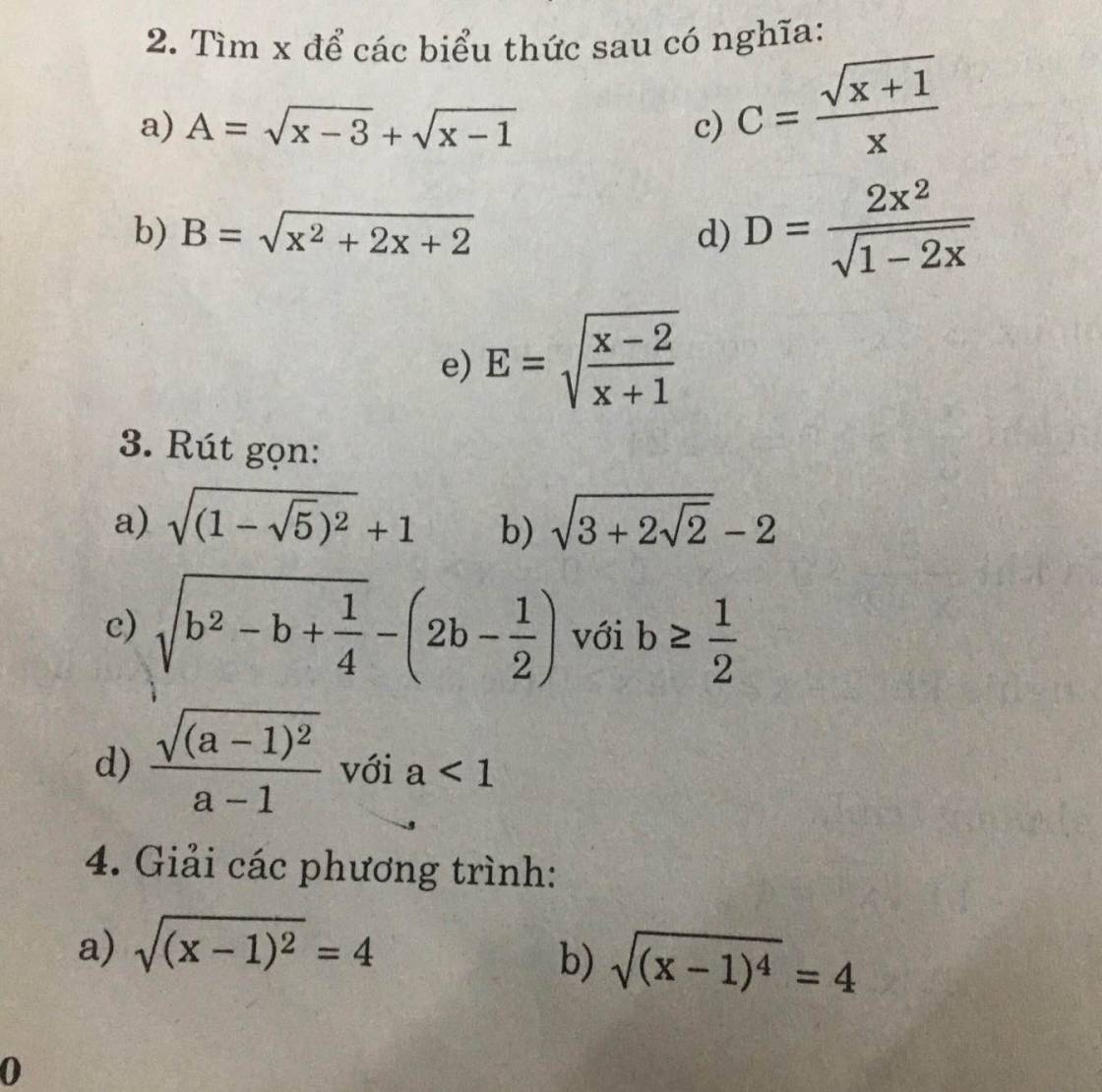Cho a+b+c=abc; a,b,c>0. CMR: \(\dfrac{1}{\sqrt{a^2+1}}+\dfrac{1}{\sqrt{b^2+1}}+\dfrac{2}{\sqrt{c^2+1}}\le\dfrac{9}{4}\)
Hãy nhập câu hỏi của bạn vào đây, nếu là tài khoản VIP, bạn sẽ được ưu tiên trả lời.


Đặt x25 = t
=> x100 + x50 + 1 = t4 + t2 + 1
= t4 + 2t2 + 1 - t2
= (t2 + 1)2 - t2
= (t2 - t + 1)(t2 + t + 1)
= (x50 - x25 + 1)(x50 + x25 + 1)


\(0< a_i< 10,\forall i=1,2,3,...,n\)
\(\overline{a_1a_2}+\overline{a_2a_3}+\overline{a_3a_4}+...+\overline{a_{n-1}a_n}+\overline{a_na_1}\)
\(=10a_1+a_2+10a_2+a_3+10a_3+a_4+...+10a_{n-1}+a_n+10a_n+a_1\)
\(=11a_1+11a_2+11a_3+...+11a_{n-1}+11a_n\)
\(=11\left(a_1+a_2+...+a_{n-1}+a_n\right)\left(đpcm\right)\)

\(a,A=\left(\sqrt{3}-\sqrt{2}\right)\sqrt{5+2\sqrt{6}}\)
\(=\left(\sqrt{3}-\sqrt{2}\right)\sqrt{3+2\sqrt{3}.\sqrt{2}+2}\)
\(=\left(\sqrt{3}-\sqrt{2}\right)\sqrt{\left(\sqrt{3}+\sqrt{2}\right)^2}\)
\(=\left(\sqrt{3}-\sqrt{2}\right)\left(\sqrt{3}+\sqrt{2}\right)\)
\(=3-2=1\)
\(b,B=\dfrac{3\sqrt{8}-2\sqrt{12}+\sqrt{20}}{3\sqrt{18}-2\sqrt{27}+\sqrt{45}}\)
\(=\dfrac{3\sqrt{8}-2\sqrt{12}+\sqrt{20}}{3\sqrt{\dfrac{9}{4}.8}-2\sqrt{\dfrac{9}{4}.12}+\sqrt{\dfrac{9}{4}.20}}\)
\(=\dfrac{3\sqrt{8}-2\sqrt{12}+\sqrt{20}}{3.\dfrac{3}{4}\sqrt{8}-2.\dfrac{3}{4}\sqrt{12}+\dfrac{3}{4}\sqrt{20}}\)
\(=\dfrac{3\sqrt{8}-2\sqrt{12}+\sqrt{20}}{\dfrac{3}{4}\left(3\sqrt{8}-2\sqrt{12}+\sqrt{20}\right)}\)
\(=\dfrac{1}{\dfrac{3}{4}}=\dfrac{4}{3}\)

\(A=\dfrac{x}{x-5}-\dfrac{10x}{x^2-25}-\dfrac{5}{x+5}\left(ĐKXĐ:x\ne\pm5\right)\)
\(=\dfrac{x\left(x+5\right)}{\left(x-5\right)\left(x+5\right)}-\dfrac{10x}{\left(x-5\right)\left(x+5\right)}-\dfrac{5\left(x-5\right)}{\left(x-5\right)\left(x+5\right)}\)
\(=\dfrac{x^2+5x-10x-5x+25}{\left(x-5\right)\left(x+5\right)}\)
\(=\dfrac{\left(x-5\right)^2}{\left(x-5\right)\left(x+5\right)}=\dfrac{x-5}{x+5}\)

`a)`\(A=\dfrac{x}{x-1}+\dfrac{1}{x+2}-\dfrac{3x}{x^2+x-2}\)
\(A=\dfrac{x}{x-1}+\dfrac{1}{x+2}-\dfrac{3x}{\left(x-1\right)\left(x+2\right)}\)
\(A=\dfrac{x\left(x+2\right)+\left(x-1\right)-3x}{\left(x-1\right)\left(x+2\right)}\)
\(A=\dfrac{x^2+2x+x-1-3x}{\left(x-1\right)\left(x+2\right)}\)
\(A=\dfrac{x^2-1}{\left(x-1\right)\left(x+2\right)}\)
\(A=\dfrac{x+1}{x+2}\)
`b)`\(S=A.B\)
\(S=\dfrac{x+1}{x+2}.\dfrac{x+3}{x+1}\)
\(S=\dfrac{x+3}{x+2}\)
\(S=\dfrac{x+2+1}{x+2}=1+\dfrac{1}{x+2}\)
Ta có:\(x\ge0\Rightarrow x+2\ge2\)
\(\Rightarrow S\le1+\dfrac{1}{2}=\dfrac{3}{2}\)
Vậy \(Max_S=\dfrac{3}{2}\) khi \(x=0\)
